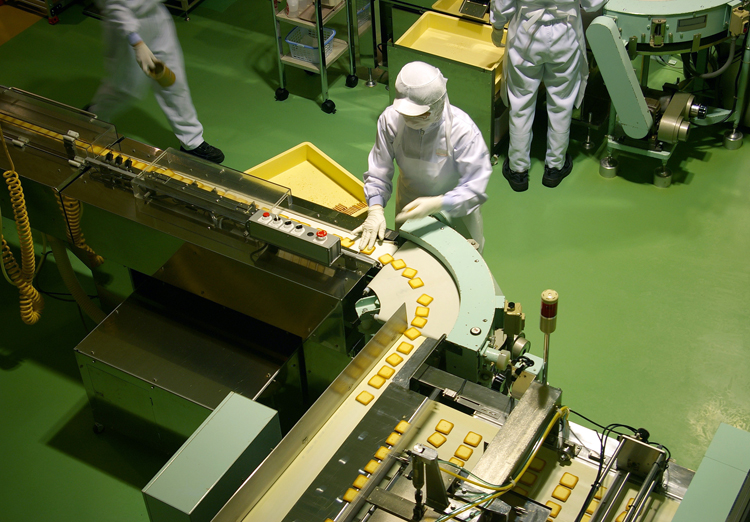We have the experience and specialist equipment to identify and eliminate any biofilm found in and around your plant or factory. You can avoid the risk of food contamination with regular maintenance checks.
“What he doesn’t know won’t hurt him.”
It’s a common expression, but unfortunately, it isn’t true, especially when it comes to water contamination.
Microbial bacteria can’t be seen with the naked eye, and if your drinking water is contaminated, then it’s bad news for everyone. It takes very sophisticated and regular testing to confirm the presence of pathogens which can be dangerous if ingested, and they’re easily missed.
Entire Hawkes Bay town becomes sick
Havelock North residents know only too well how dangerous water-borne contamination can be.
Back in August, the small North Island town fell victim to a campylobacter bacteria outbreak, which left hundreds suffering with widespread vomiting and diarrhoea. The town came to a standstill, with entire families sick, and parents having to look after children while battling the illness themselves.
As more and more people began calling into doctors’ clinics and hospitals with gastro-related symptoms , the council ordered tests on the town’s water supply, and the results came back positive.
They immediately started to chlorinate the water, and warned the public via social media and official websites, but by then it was too late. Too many people had already drunk the polluted water, and as a result over 3,000 people sought medical attention for gastroenteritis.

How to prevent it from happening
New Zealand records about 50 waterborne outbreaks a year, with most caused by the pathogens giardia and cryptosporidium. Contamination tends to happen after heavy rainfall, when animal waste can overflow into water supplies.
Unfortunately, it’s not just a water supply problem. These pathogens can found pretty much anywhere, especially where there is organic material. Colonies of harmful bacteria can form on walls and ceilings of food manufacturers. They are often overlooked because they can’t be seen with the naked eye, and so are left to grow and expand, eventually forming a biofilm.
In some cases the original microbes may not even be harmful to humans, but when left to grow, they can then attract dangerous pathogens, thus becoming a potential source for food contamination. Biofilms not only contaminate food products, but they also promote corrosion, fouling of probes and the gumming up of filters and strainers in processing plants.

How Industrial Cleaning Specialists can help
Industrial Cleaning Specialists can test for the presence of Biofilm on walls and ceilings very quickly and easily, using a luminometer which detects the presence of adenosine triphosphate (ATP).
ATP is a molecule found only in and around living cells, and it gives a measure of biological concentration, by the light produced by its reaction with the naturally occurring firefly enzyme Luciferase. The amount of light produced by the luminometer, is directly proportional to the amount of biological energy present, generated by ATP in the sample or on the surface being tested.
Because ATP is present in and around all living cells including humans, the results from the luminometer don’t necessarily indicate the presence of bacteria (harmful or otherwise), but that there are living cells in the area. As such, it indicates how clean the area is, the higher the reading, the more living cells, and the greater possibility of harmful pathogens. It is a sophisticated sensitive indicator test of hygienic status and potential risk.
Although ATP testing with a luminometer is not intended to replace laboratory based microbial testing, there is a direct correlation between the 2 methods. Effective cleaning and sanitising simultaneously removes the material capable of supporting microbial survival and growth as well as the microbes themselves.
After confirming the presence of biofilm in a client’s premises, Industrial Cleaning Specialists use three major steps in removing and controlling biofilm:
- Identifying and using the most effective cleaning and sanitising agents, as traditional disinfectants like hypochlorite are not effective against biofilm.
- Allowing proper exposure time and operating at the correct temperature for the products used ensures optimum results.
- Utilizing appropriate mechanical action to ensure complete destruction and removal of the biofilm exposing the original contaminants to the cleaners and sanitisers.
The above steps are carried out in conjunction with the clients technical and QA staff.
The longer a biofilm is allowed to grow and expand, the harder it is to clean and remove.
This is one of the main reasons why we recommend to all their food processing clients that they utilize the planned cleaning and maintenance option that we can offer.
History has demonstrated that professional operators get better results than tired and frustrated employees. Contact us today if you have any questions. Our friendly and experienced staff will be happy to help.






